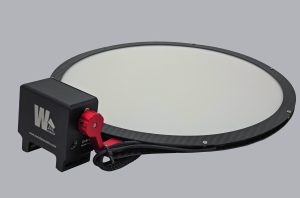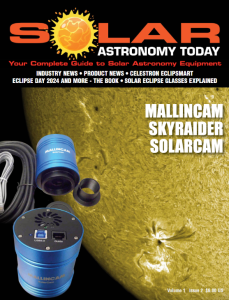The new WandererCover V4-EC Motorized Flat Panel from Wanderer Astro takes all the work out of making flats. This latest version has a built-in micro encoder that can accurately feedback the position of the cover in real time, making high-precision opening and closing possible. There is no longer the need to turn on a monitor camera to check the status of the flat panel. The repeatable positioning accuracy of WandererCover V4-EC is as high as ±0.25 degrees.
 With the new encoder and a new algorithm, the WandererCover V4-EC Motorized Flat Panel provides easy automatic setting of the opening and closing position. When a device is in a remote observatory, the V4-EC can automatically be set for the open/close position and it will automatically detect obstacles.
With the new encoder and a new algorithm, the WandererCover V4-EC Motorized Flat Panel provides easy automatic setting of the opening and closing position. When a device is in a remote observatory, the V4-EC can automatically be set for the open/close position and it will automatically detect obstacles.
The WandererCover V4-EC has a new motor which increases the load-bearing capacity by more than 50% from the previous version, helping prolong its durability. Although the motor is larger, the 80mm model weighs only 254g and the 240mm model weighs only 594g, making it one of the lightest motorized flat panels on the market.
As the Wanderer Astro team notes, “In humid areas, the flat panel is prone to condensation at night. If the dew does not evaporate in time, it will easily make the inside of the dew shield moist after closing. If this happens for a long time, the lens may become damp and moldy. As suggested by users, the WandererCover V4-EC has a built-in heating element and provides three levels of heating adjustment, which can allow the flat panel to dry all night or quickly evaporate dew in the morning.”
You can learn more about the WandererCover V4-EC Motorized Flat Panel here.

 And to make it easier for you to get the most extensive news, articles and reviews that are only available in the magazine pages of Astronomy Technology Today, we are offering a 1-year magazine subscription for only $6! Or, for an even better deal, we are offering 2 years for only $9. Click here to get these deals which only will be available for a very limited time. You can also check out a free sample issue here.
And to make it easier for you to get the most extensive news, articles and reviews that are only available in the magazine pages of Astronomy Technology Today, we are offering a 1-year magazine subscription for only $6! Or, for an even better deal, we are offering 2 years for only $9. Click here to get these deals which only will be available for a very limited time. You can also check out a free sample issue here.
The Sun is more active than it’s been in years and if that’s not enough, we have the Annular Solar Eclipse on October 14, 2023 and the Total Solar Eclipse on April 8, 2024! If you’d like to learn more about the technology behind solar observing, solar imaging and more, you can check out our new monthly magazine – Solar Astronomy Today. It’s free to read, no subscription needed and available here. And if you are preparing for the upcoming eclipses and want to know your equipment options from solar glasses to the most out of this world solar viewing and imaging options, check out our free publication – The Definitive Guide to Viewing and Imaging the Sun – simply click here and enjoy reading!

